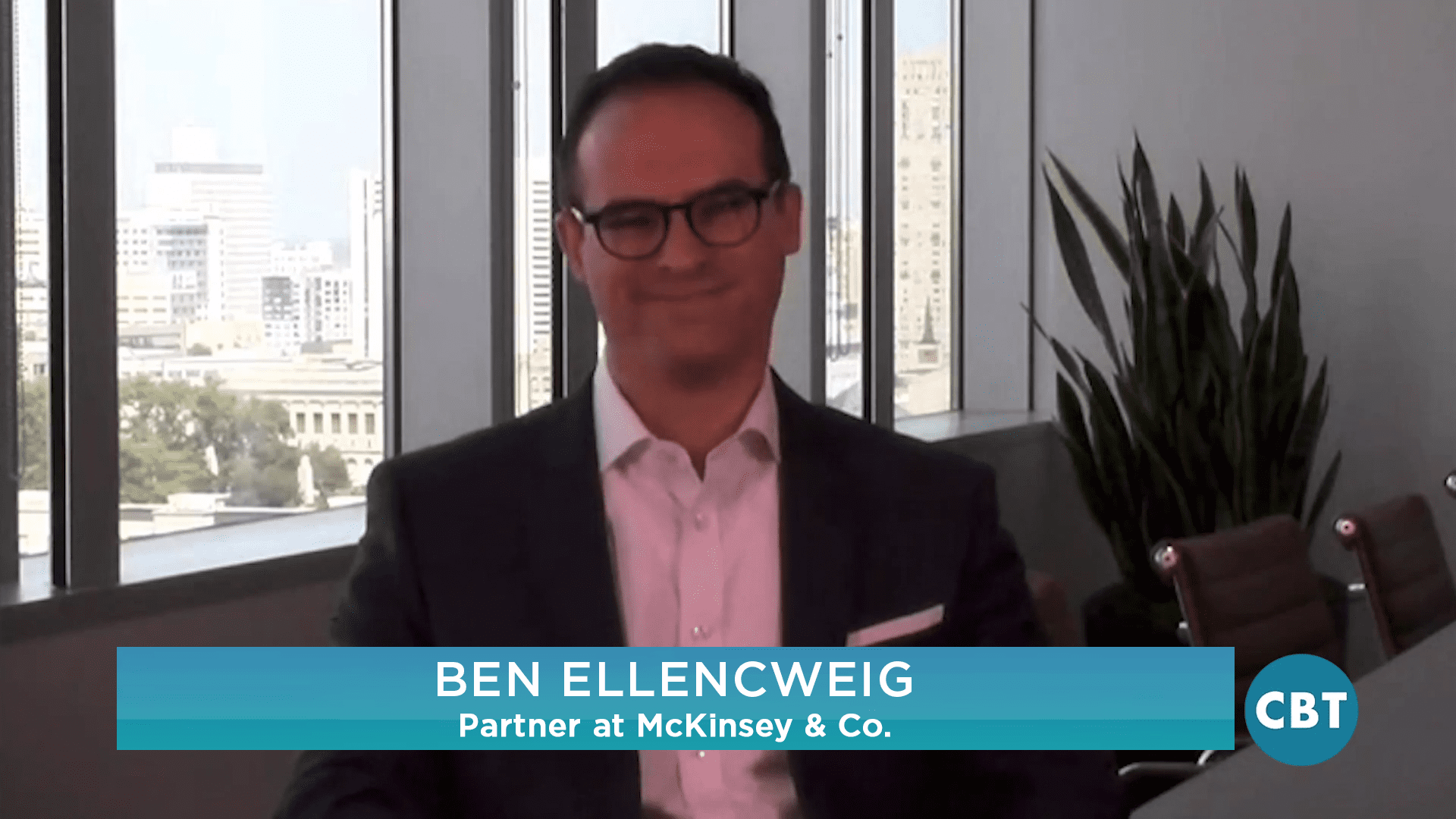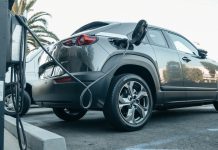Jim Fitzpatrick sits down with Ben Ellencweig, Partner at McKinsey & Co., on CBT News to talk about how dealerships must adapt to the growing online used-vehicle market. With consumers making a large number of their purchases online, from clothing to electronics and even food, dealerships place a lot of focus on new cars, but Ben says they wanted to focus on the used side, especially with 40 million used cars sold in the USA per year.


To hear more about these three factors and what Ben has to say about them check out the full interview above.
VIDEO TRANSCRIPT:
Jim Fitzpatrick: Hello everyone. I’m Jim Fitzpatrick. Thanks so much for joining us on another edition of CBT News. Today we’re so happy to have with us, Mr. Ben Ellencweig, who is partner at McKinsey & Company. Welcome into the show, Ben.
Ben: Thanks for having me, Jim.
Jim Fitzpatrick: Sure. You had an article in Automotive News that, Dealers must adapt to growing online used-vehicle market. Talk to us a little bit about that article and what some of the takeaways were.
Ben: Yeah. Absolutely. So Jim, we are so used to purchasing our clothes, our electronics and even our food online. Everybody talks about the digital revolution in auto and we always talk about the new cars. What we wanted to do is actually look at what’s happening on the used side, especially given we’re looking at 40 million used cars sold a year in the U.S. alone.
Ben: We found some interesting things. Just like we want to have a great online experience throughout our purchases, obviously, when you purchase your vehicle, one of the most important things you will purchase, people want to have the same great experience.
Ben: I think what we learned, consumers care about three things. First of all, they want better, trustworthy information. Customers want the extensive history of the vehicle. Every dent, every scratch, every repair. 65% of customers out there would love to get that in their hand. Second thing, people are looking for easier financing. Simple, transparent, not too many options to understand those T’s and C’s of leasing or loans. And, then, last, as I said, better customer experience. Easy access. Get answers to your questions. And have a seamless experience.
Jim Fitzpatrick: That’s right. And is it your feeling is though dealers are challenged in delivering on all of those areas to consumers today?
Ben: I think the dealer group is comprised with many different elements. So I would say the more traditional dealers have some homework to do just on the basics. For example, how do you think about an easy-to-navigate website? A very attractive website? How do you lay out those financing options? And how do you create that seamless experience when you walk in the store?
Ben: I think when you go to the more advanced dealers, the big dealer groups or the more digitally savvy, I think we’re getting to more questions around, “How do I even try out different ways of delivery?” for example. Home delivery … a quarter of consumers, about 20% are actually willing to try out how it would feel like when your car’s actually being delivered to your front door.
Jim Fitzpatrick: Yeah. That’s for sure. And speaking of which, as you know, Carvana, you mentioned it in your article, is kind of showing dealers out there that that is the way consumers, in many cases, want the transaction and the sales process to go, isn’t it?
Ben: Yeah. I think it’s interesting. There’s so many disruptions in the industry. There’s always a lot of questions about different players. We keep usually talking about the manufacturers, the dealer group and consumers. I think Carvana is one example. There are other digital disrupters coming in. And I think the fact that we see more and more players and the investors looking at this space means there’s still opportunity to improve the customer experience.
Jim Fitzpatrick: Yeah. For sure. And do you find this to be the case in both new car sales, as well as, used car sales?
Ben: That’s a great question. We always focus the numbers … every month we’re so focused with the new cars. But actually when you think about the competitive landscape, on the used car, it’s even more fierce. Dealers are obviously competing among themselves. We have the big used-car retail chains. And we have [p-to-p 00:03:49], consumers like you and I, that can just sell the car to each other. So I think, there, the bar on the digital side is higher. And I think there’s more room for improvement.
Jim Fitzpatrick: Yeah. I would agree. We chase that [SAR 00:04:02] so much to say we’re traveling at 17 plus million vehicles sold in 2019, still a very good year. Some dealers would say you paint a picture that we need to focus on digital marketing, or digital retailing, rather, and deliver the cars the way the consumers wants them to deliver their vehicle. There may be many dealers out there that say, “What’s so wrong with the delivery system today if we’re setting records each year?”
Ben: Yeah. And I think a lot of people are experimenting at the moment. We’re seeing the delivery to the home. We’re seeing questions on subscription. We’re seeing dealers and manufacturers looking at different angles. But I think there’s one takeaway I would like to emphasize, again, going back to the basics. I mentioned the financing, for example. Easier financing.
Ben: One of things that came out and loud from the report is people would like to experience and make their decisions from the comfort of their living room sofa. We would actually call dealers to embrace that. Consumers feel less vulnerable, more comfortable to do things at their own pace. To compare and contrast. See the different options. Consult with the household before making a choice. The more we move that experience, before they actually set foot in the dealerships, some of the paperwork, we can make it simpler, more convenient. And, honestly, just create a better experience, sharpen the car, increasing loyalty in the long term.
Jim Fitzpatrick: What are the trends showing? In 20 years, how many vehicles, what percentage of vehicles will be delivered to a consumer’s home almost like an Amazon product versus the consumer having to go to the dealership to pick up their vehicle? New or used?
Ben: So we’ve looked a lot about how the market would look like, fast forward 2025, 2030, even. One of the things we’re seeing … I think the quick answer, it’s going to be hybrid. A lot of people still value the test drive. That’s an important element both on the consumer side to feel and touch the car, but also on the dealer side to create the relationship and have the conversation.
Ben: We are seeing people that would be, while ownership is there, be more comfortable going almost to a service center. Imagine if a few dealers get together and create almost a service depot. I think we’ll see more and more of the popup stores. For example, what we’re seeing kind of the test lane innovation.
Ben: But I think the quick answer is, and by the way, we’re also seeing brand stores by manufacturers. So I think we’ll see many, many more options, some online, some brick and mortar, and some combined. And I think the future basically asks everybody to be more agile and more adaptive.
Jim Fitzpatrick: Dealers have been building these phenomenal dealerships over the course of the last 20, 25 years as OEMs have put more demands on them to build very luxurious showrooms. And, needless to say, the front end gross profits on many new cars, almost all new cars, have just been compressing all the way down. Do you see the need for showrooms? Do consumers still want a big fancy showroom from their dealer?
Ben: I think the quick answer is it’s going to be a mix. There’s going to be a segment out there that wants to come and see. And, by the way, when you talk to dealers, both new car dealers and used-car dealers, many times we see dealers coming in with a car in mind, coming into the showroom, seeing something else and ending up upgrading or changing either the trim line or sometimes even the model by itself.
Ben: However, there I another segment, maybe the more younger segment, tech-savvy, that will feel comfortable doing most of that journey online. And some of them will get their car delivered to their home without even meeting a human person.
Jim Fitzpatrick: Ben Ellencweig, thank you so much for joining us on CBT News. We very much appreciate it. We’d love to have you back in the future to talk more about this topic. And some of the others, trends that you guys follow at McKinsey & Company.
Ben: Thank you so much. It’s an exciting time and space and would love to be back. Thank you.
CBT Automotive Network, the number one most-watched network in retail automotive. This has been a JBF Business Media production.








